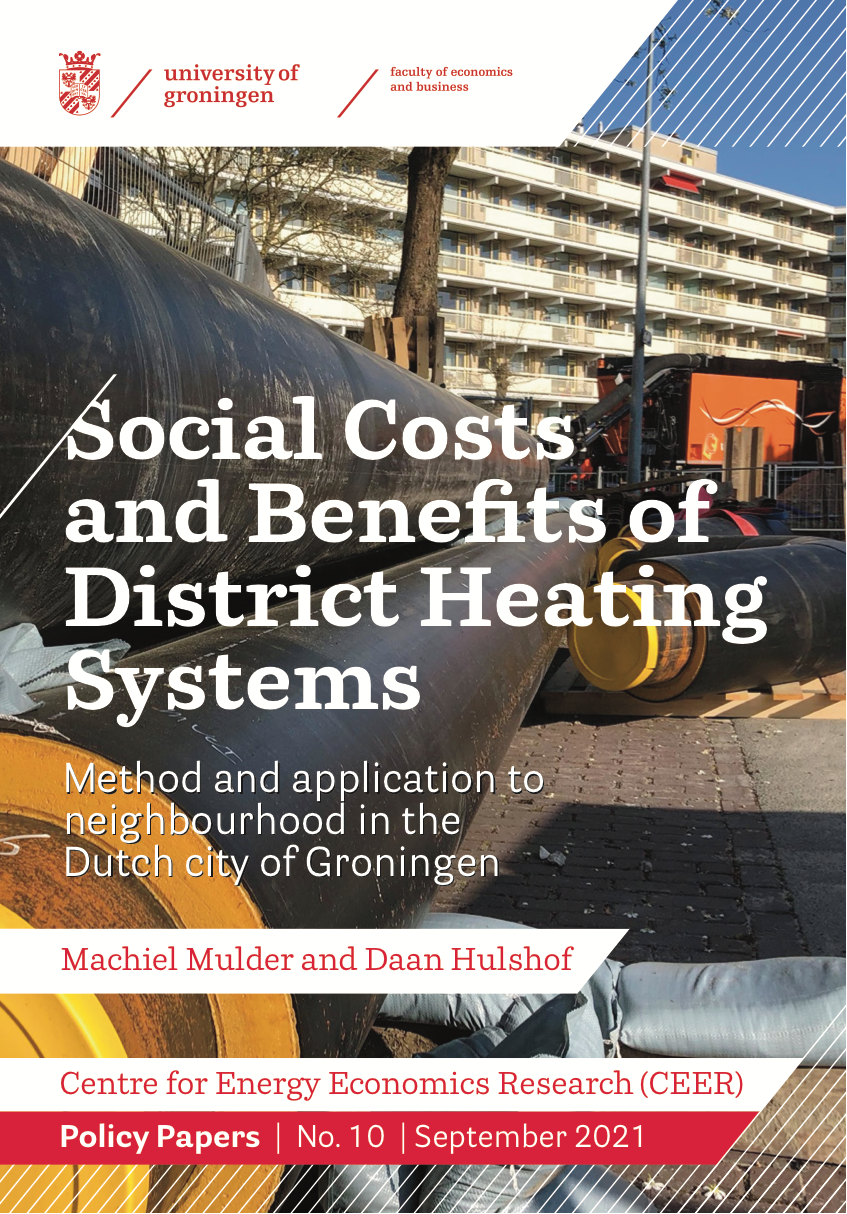Optimal design of district-heating system depends on characteristics neighbourhood as well as situation in electricity market

From a societal perspective, the optimal design of district-heating systems depends on both the characteristics of the houses which have to be connected, in particular how much heat they demand, and the situation in the electricity market. When the electricity price is expected to be high in the future and/or when the electricity is mainly generated by non-renewable resources, then is not optimal to use heat pumps as they require enormous amounts of electricity. In such circumstances, it can be more beneficial for a society to use residual heat, e.g. from an industry with a delivery temperature of 70 degrees Celsius, provided that the distance between heat source and houses is limited.
This follows from a social-costs-benefit analysis of various design options of district-heating systems in the city of Groningen, conducted by prof. Machiel Mulder and Daan Hulshof from the University of Groningen. This municipality has the ambition to build a district-heating system in the North-west of the city in order to reduce the consumption of natural gas and, hence, to contribute to the reduction of CO2 emissions.
The method of social-cost-benefit analysis enables researchers to take all kind of effects of policy measures on board, not only effects (i.e. costs and benefits) which are having a market price, but also so-called external effects, like environmental emissions or the effort required from households to adapt their houses. The research of Mulder and Hulshof shows that the construction of a district-heating system in the city of Groningen is a beneficial investment from societal perspective when the value of reducing CO2 emissions is set at 500 euro per ton or higher. This outcome requires that the heat is delivered to the houses at a temperature of 70 degrees Celsius, that the price of electricity is not too high (i.e. much lower than the current market prices) and that the electricity is mainly generated from renewable sources.
District-heating systems which offer heat at temperatures below 70 degrees Celsius are relatively expensive when houses have to invest in insulation and heat distributors. In addition, these houses generally have to install heat pumps, which not only result in higher costs of electricity use, but also lead to a higher utilisation of the electricity-distribution grid, which may require extra investments. Because of this, it is often the least expensive option to offer heat at 70 degrees Celsius as then such investments and costs are not required. When in such systems the source heat is below that delivery temperature (for instance, aqua thermal energy), also heat pumps in the system are required. As a consequence, also these systems show a high demand for electricity. As a matter of fact, this electricity should be not too expensive and also generated in a renewable way, otherwise the costs would be too high and the (environmental) benefits too small.
When these conditions do no hold, such district-heating systems are relatively expensive from a societal perspective. The first-best alternative system is the one which uses residual heat from an industry which can be delivered at a higher temperature. Of course, the source of this residual heat should be located near by the users of heat, otherwise the costs of transporting the heat would make the project unprofitable, also from a societal perspective.
For more information, please contact:
Prof. dr. Machiel Mulder: machiel.mulder@rug.nl of 06-31035729
More news
-
10 November 2025
Decentralization of youth care
